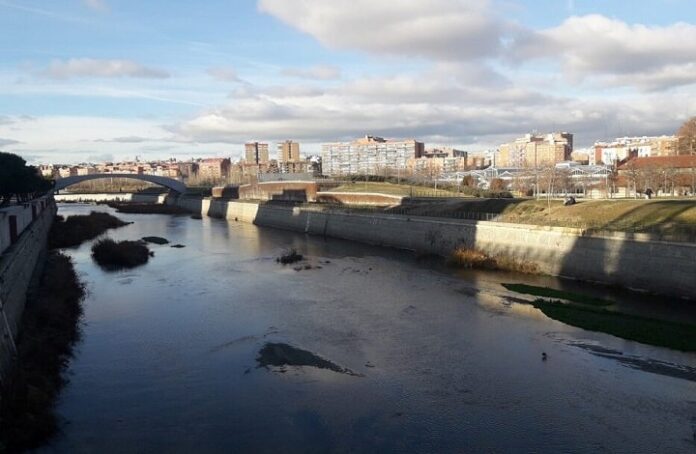In its origins, the area included pastures, dirt roads, a vegetable garden, a hermitage, and well-known tobacco and gas factories. As the centuries passed, an almost railway empire transformed those lands into one of the most important and industrialized enclaves in Madrid. Since the late 20th century, it has become one of the cultural and residential epicenters of the capital. This historical tour is captured in the book "Arganzuela 50th Anniversary," published by the City Council to commemorate half a century of history.
The historical route begins with the city's patron saint, San Isidro, who used a mill in Arganzuela because of its location, halfway between his house and the surrounding area. At that time there was also a hermitage dedicated to Saint Mary of la Cabeza, located near the present-day municipal market of the same name, one of the district's main shopping centers.
A legend from the fifteenth century relates that the name Arganzuela comes from the nickname of a girl who worked as a water carrier during the reign of Isabella I of Castile. The queen, grateful for the little girl's gesture of giving her a drink on a hot day, gifted her a plot of land at what is now the start of Arganzuela Street next to the Ronda de Toledo.
The historians Ferrando and Sánchez Mellado, authors of the book, offer a somewhat more precise explanation: in that area there was a hamlet inhabited by former residents of Arganda, known by the diminutive Arganzuela. On May 15, 1492, the Catholic Monarchs granted permission to the town of Madrid to enclose the Dehesa de Arganzuela, a grazing area on the banks of the Manzanares, which since the 14th century had been used by cattle ranchers to graze and slaughter their cattle, which centuries later would lead to the construction of the municipal slaughterhouse.
The true transformation arrived in the eighteenth century with the construction of the Toledo Bridge, wide avenues and tree-lined promenades such as the Segovia Ring Road and the promenades of Pontones, Olmos, Acacias, Imperial, and the Melancholics. Additionally, more avenues were extended in the district, defining future areas such as Embajadores Street and Roundabout, Santa María de la Cabeza, Delicias, and Méndez Álvaro.
During the nineteenth century, the industrialization of Arganzuela accelerated with the installation of factories such as the gas works, which occupied a block between the Ronda de Toledo, the Paseo de las Acacias, and Calle del Gasómetro. The Royal Tobacco Factory, known as La Tabacalera, became one of the industrial centers with the highest concentration of workers in the city, with more than four thousand female workers.
The 20th century brought with it the opening of markets and commercial spaces, as well as protected housing that further increased the area's population. The social reclassification of 1963 and the Development Plan for Avenida de la Paz in the 1970s marked the beginning of its transformation into a residential neighborhood, culminating with the Railway Green Corridor Action Plan in the 1980s.
The arrival of the railway in the mid-19th century was another key milestone in the growth of Arganzuela. The inauguration of Delicias Station in 1880 enabled better connectivity with surrounding areas and other important stations such as Atocha and Príncipe Pío, facilitating the movement of people, goods, and industries.
In 1970, Madrid's administrative division included Arganzuela in the new 18-district scheme, although its independence was finally consolidated in 1987 with the General Urban Development Plan. Today, this district has 655.21 hectares and a population of 155,509 inhabitants distributed across seven neighborhoods: Imperial, Acacias, Chopera, Legazpi, Delicias, Palos de Moguer, and Atocha.
The Madrid Río project has added a new attraction to the district, with green spaces, a riverside area, and bridges such as the Perrault Bridge, which connects Arganzuela with the neighboring districts.
One of Arganzuela's renewal emblems is the old municipal slaughterhouse, now converted into a cultural center known as Matadero Madrid. This space, with its distinctive brick silhouettes and its water reservoir, housed industrial facilities during the 20th century and was transformed in 2007 into a venue for performances, culture, and art.
To celebrate its 50th anniversary, the Arganzuela Municipal Board has contributed to the publication of the book 'Arganzuela 50th Anniversary,' illustrated by J. Nicolás Ferrando and José María Sánchez Mellado. This historical and photographic tour is accompanied by an exhibition in the La Lonja room of the Casa del Reloj, open until October 29.
Fuente: Diario.Madrid.es



